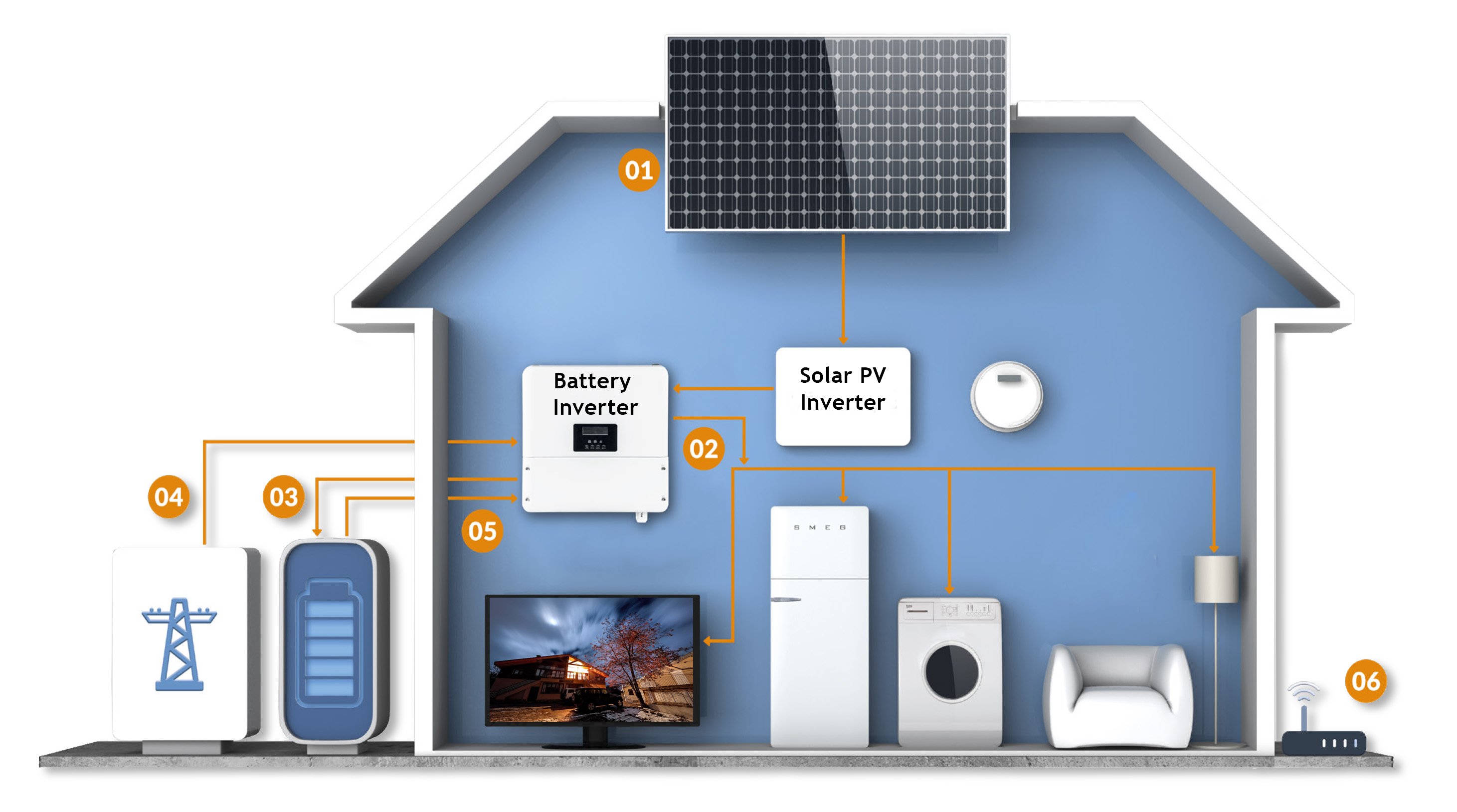Solar Energy Storage Work

Solar energy storage involves capturing excess electricity generated by solar panels during periods of high solar irradiance and storing it for later use when sunlight is not available, such as during nighttime or cloudy days. Several technologies are used for solar energy storage, including batteries, thermal storage, and pumped hydro storage. Here's how solar energy storage works using batteries as an example:
Battery Storage System: A battery storage system consists of rechargeable batteries, a battery management system (BMS), inverters, and control electronics. Batteries store electricity in chemical form during periods of surplus generation and discharge it as needed to power electrical devices or feed into the grid.
Charging Phase: When solar panels generate more electricity than is being consumed on-site, the excess electricity is directed to charge the batteries. The inverters convert the DC electricity from the solar panels into AC electricity suitable for charging the batteries. The BMS monitors and controls the charging process to ensure optimal battery performance and safety.
Discharging Phase: When sunlight is not available or electricity demand exceeds solar generation, the batteries discharge stored energy to power electrical loads. The BMS manages the discharge process, controlling the flow of electricity from the batteries to the load or grid. In grid-tied systems, battery storage can provide backup power during grid outages or peak demand periods when electricity prices are high.
Cycle Efficiency: Battery storage systems have a cycle efficiency that determines how much energy is retained during charging and discharging cycles. The efficiency of battery storage systems depends on factors such as battery chemistry, temperature, depth of discharge, and charge/discharge rates. Lithium-ion batteries, lead-acid batteries, and flow batteries are commonly used for solar energy storage due to their high energy density, long cycle life, and rapid response times.
Monitoring and Control: Monitoring and control systems continuously monitor the state of charge (SOC), state of health (SOH), and other performance parameters of the batteries. Advanced control algorithms optimize battery operation, maximize energy utilization, and prolong battery lifespan. Remote monitoring capabilities allow system owners to track battery performance, receive alerts, and adjust settings as needed.
Integration with Solar PV Systems: Battery storage systems can be integrated with solar PV systems to create hybrid solar-plus-storage solutions. In these systems, batteries complement solar panels by storing excess solar energy and providing dispatchable power, load shifting, and grid services. Hybrid systems optimize self-consumption, increase energy independence, and enhance the resilience and reliability of solar energy systems.
Overall, solar energy storage enables the efficient utilization of solar power, enhances grid stability, and provides backup power during outages. By storing excess solar energy for later use, solar energy storage systems help maximize the value and benefits of solar energy, supporting the transition to a more sustainable and resilient energy future.
Thank you,